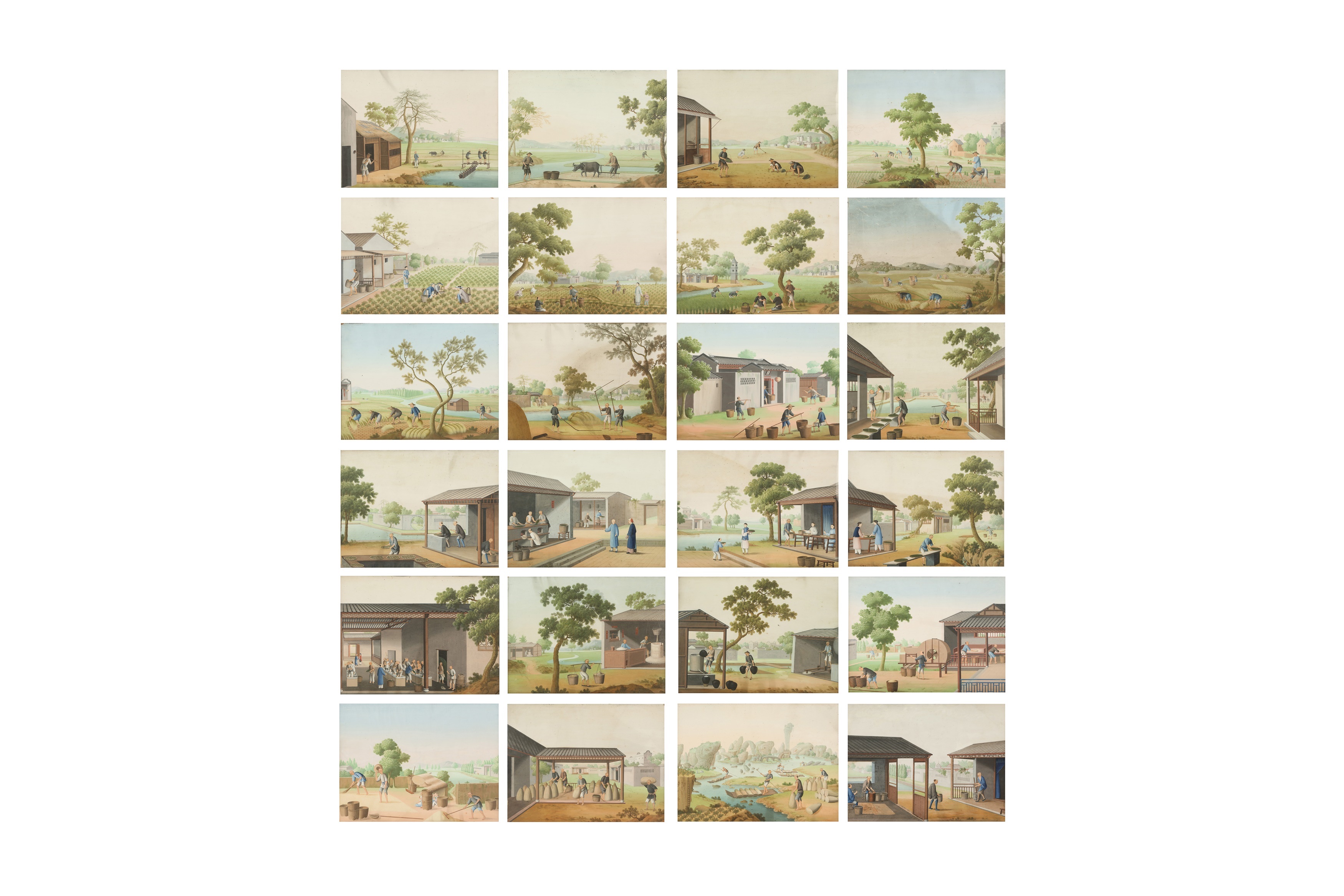The Macartney Tea Paintings: 24 Chinese Works of Historic Significance
The very special collection will be offered in our November Asian Art sale
These 24 Chinese paintings are not only works of outstanding artistic refinement but are also of remarkable historical value. Presented to Lord Macartney on behalf of the Qianlong Emperor during the first British diplomatic mission to China in 1793, they mark a pivotal moment in Sino-British history.
The paintings speak to both the cultural exchange and political ambitions of the Macartney Embassy, Britain’s first formal diplomatic engagement with China. With exquisite detail, they illustrate the tea trade, reflecting the industry that would later come to symbolise both nations.

From Imperial Gift to British Aristocracy
After the embassy concluded, the set passed to the youngest member of the mission, Lord Macartney’s cousin, John Crewe, 2nd Baron Crewe (1772–1835). A notable figure in his own right, Crewe was painted as a child by Sir Joshua Reynolds, a portrait famously remarked upon by Horace Walpole.
Despite financial difficulties later in life, the paintings were retained by the Crewe family and were recorded as hanging in the Parsons Bedroom at Crewe Hall in an 1898 inventory. Their presence in a private collection for over two centuries added to their mystique and rarity.
A Painting Lost and Found
In the 1980s, one painting from the set was misplaced in an unfortunate mix-up and later resurfaced in a junk shop, purchased for just £10. Legal complications over ownership meant the set remained incomplete for decades. However, in a remarkable turn of events, a resolution was reached just before the catalogue for our 2021 sale went to press, reuniting all 24 works for the first time in more than 200 years.
This reunion marks a major moment for Chinese art on the international stage and represents one of the most compelling collecting stories in recent years.
Trade, Culture and Artistic Achievement
These paintings are rare examples of Chinese export art with scenes illustrating the cultivation, processing and trade of tea. Details include children sheltering under cloth, labourers carrying baskets and the lush tea-growing landscape. One scene depicts a Chinese and Western merchant in dialogue, while another features Western-style buildings within a Chinese setting, possibly alluding to Jesuit influences.
Only once previously exhibited publicly as a set (23 of 24 were shown) at the 1997 exhibition A Tale of Three Cities at the Barbican Art Gallery, this complete series is a significant visual document of the era. The quality of execution and vivid storytelling sets it apart from other 19th-century examples of tea trade paintings.
With the full set now reunited, these paintings provide an extraordinary opportunity for scholars, collectors and institutions alike to reconnect with a key episode in global trade and artistic exchange.
Interested in receiving a complimentary Asian Art valuation?
Contact the Asian Art department via email at asian@chiswickauctions.co.uk or submit an Online Valuation.